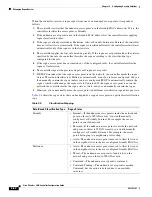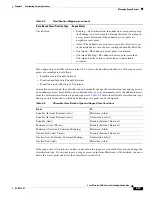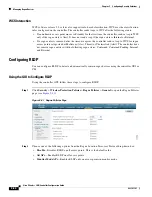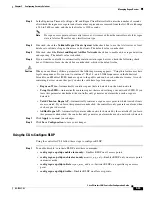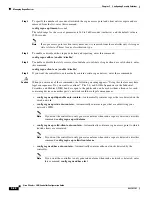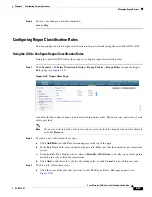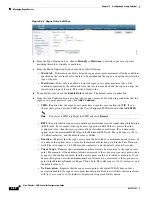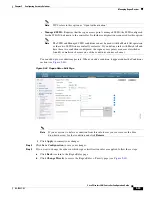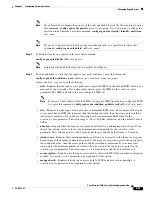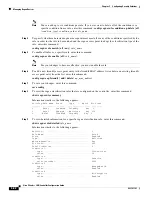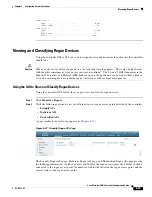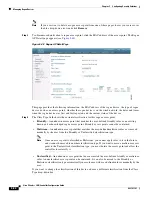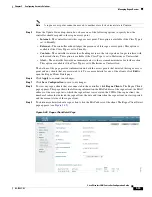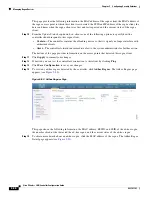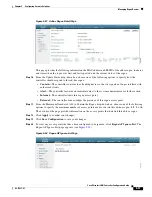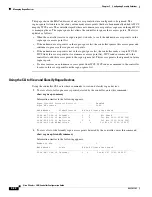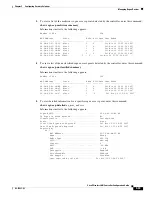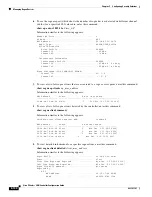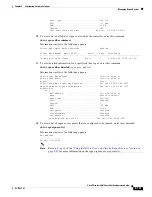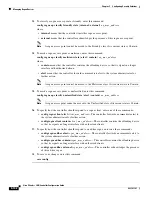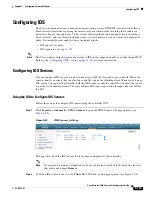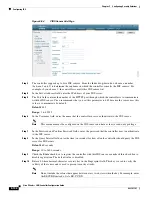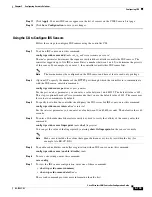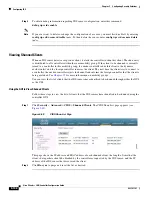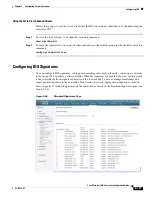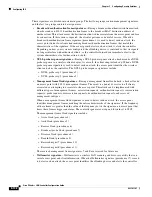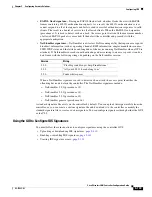
5-94
Cisco Wireless LAN Controller Configuration Guide
OL-17037-01
Chapter 5 Configuring Security Solutions
Managing Rogue Devices
Note
If you ever want to delete a rogue access point from one of these pages, hover your cursor over
the blue drop-down arrow and click
Remove
.
Step 3
To obtain more details about a rogue access point, click the MAC address of the access point. The Rogue
AP Detail page appears (see
).
Figure 5-48 Rogue AP Detail Page
This page provides the following information: the MAC address of the rogue device, the type of rogue
device (such as an access point), whether the rogue device is on the wired network, the dates and times
when the rogue device was first and last reported, and the current status of the device.
Step 4
The Class Type field shows the current classification for this rogue access point:
•
Friendly
—An unknown access point that matches the user-defined friendly rules or an existing
known and acknowledged rogue access point. Friendly access points cannot be contained.
•
Malicious
—An unknown access point that matches the user-defined malicious rules or is moved
manually by the user from the Friendly or Unclassified classification type.
Note
Once an access point is classified as Malicious, you cannot apply rules to it in the future,
and it cannot be moved to another classification type. If you want to move a malicious access
point to the Unclassified classification type, you must delete the access point and allow the
controller to reclassify it.
•
Unclassified
—An unknown access point that does not match the user-defined friendly or malicious
rules. An unclassified access point can be contained. It can also be moved to the Friendly or
Malicious classification type automatically in accordance with user-defined rules or manually by the
user.
If you want to change the classification of this device, choose a different classification from the Class
Type drop-down box.



